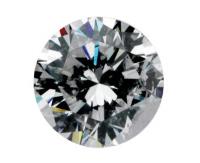 Add My Company
Add My Company
Sign In
The Brilliant Cut
02-03-2017

The modern day ‘brilliant cut’ is by far the most popular type of cut used for diamonds today, in fact it is rumoured that 9 out of every 10 stones cut is a brilliant cut, which is quite some statistic! The brilliant cut is produced in such a way as to ensure that the maximum amount of light can be reflected through the front of a gem, which is particularly effective in colourless stones, and helps to optimise the fire and brilliance (which is what we admire most in our gemstones).
The source of the original concept for the brilliant cut is somewhat murky although many attribute Vincenzio Perruzzi, a Venetian stone cutter from the 18th Century with the idea. It underwent many transformations during its early inception however, and the modern day ‘brilliant’ design was developed by Marcel Tolkowsky in Belgium in 1919. This consisted of 57 cuts in total; 32 to the top half of the stone (the crown, situated above the girdle) and 25 to the bottom half (the pavilion, positioned below the girdle). Its application was not limited to only round cut stones, but could also work successfully on oval, pear shaped pendeloque, marquise and navette shapes too. In fact, such was the success of the brilliant cut that many subsequent cuts have been developed using the same ‘blue print’ as the basis, and then gently adapting it to suit the required shape. A good example of this is the princess cut which was designed for a square stone in 1979 and is now interestingly, the second most popular design after the round brilliant.
Maintaining the weight of a gem whilst cutting is paramount, so Tolkowski also developed a method of calculating the correct proportions of the stone alongside the faceting itself, to enable optimum results every time. It can often be a sign of a poorly cut stone when the proportions are incorrect, as when cut too shallow a stone will have insufficient weight for the width of the table, as well as poor colour saturation. Conversely when cut too deep, stones can be difficult and impractical to set and reflect light badly due to the excess material at the base.
When purchasing stones in bulk you will often have the choice of either ‘hand cut’ or ‘machine cut’ examples, with the latter generally being the more expensive option. Whilst most stone cutting is done via a combination of both hand and machine processes, technical advancements have ensured that machine cut stones have a precise and accurate finish, which is sometimes lacking in some of the inexpensive hand cut examples.
Regardless of method, the key aspects of a fine stone cut – namely height (depth of the facet), angle (the plane on which the facet is cut) and index (placement of the facets onto the shape) – remains the same. It just so happens that the round brilliant cut combines all three to the point of perfection, which is why it is the most popular gemstone cut of all time.
Want to add a brilliant cut diamond to your next design? Cooksongold stock a wide range of round brilliant cut diamonds in a variety of sizes, so why not explore the full collection here
For more information on The Brilliant Cut talk to Cooksongold
Enquire Now
List your company on FindTheNeedle.

